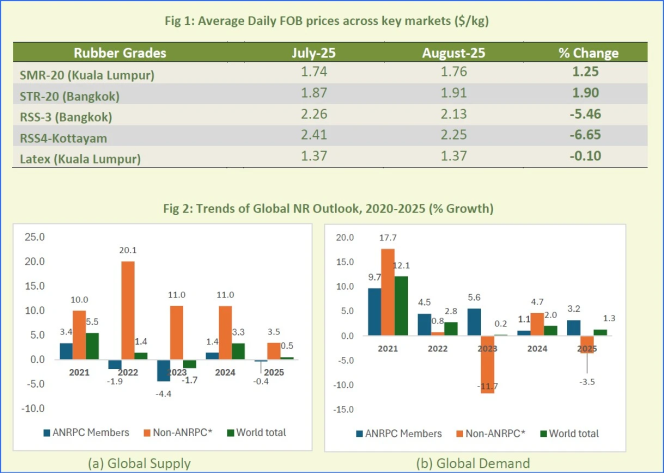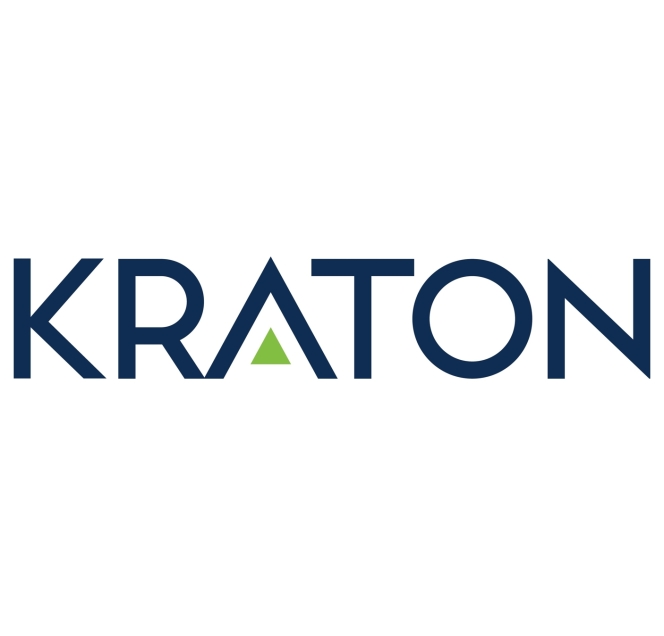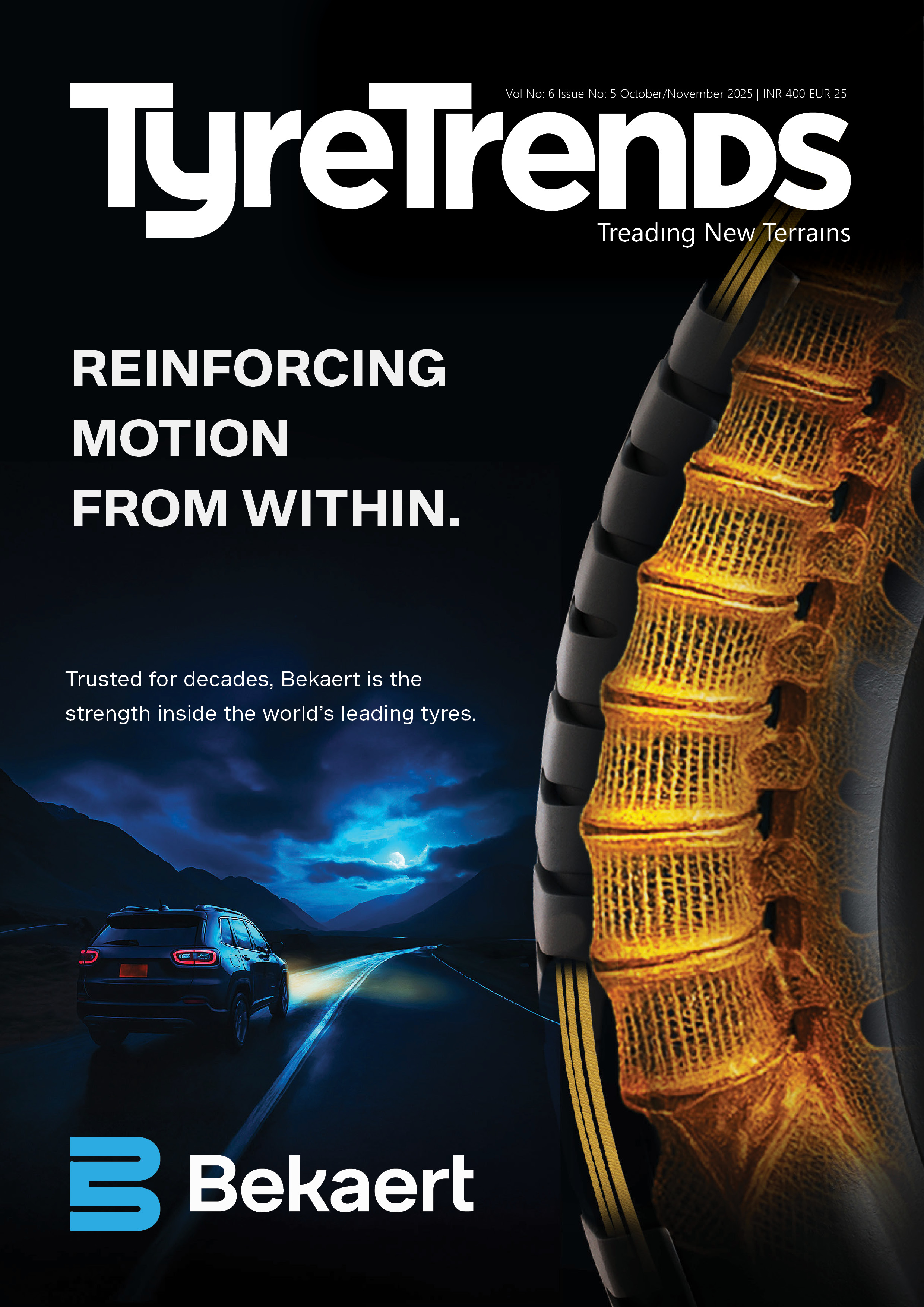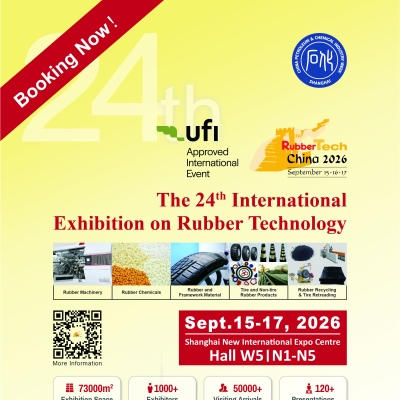WHEN ADDITIVES BECOME FUNCTIONAL, NEW POSSIBILITIES EMERGE!
- By Colin Clarke
- December 23, 2020

Polymer producers have responded to the changing tyre industry expectations, their innovations take into account a more reactive functionality within polymer architecture, and this is closely matched by increasingly greater degrees of filler surface chemistry. As a result, tyre compound properties may now be tailored to meet quite specific tyre performance targets.
Tyre processing methods also underwent progressive stages of modernisation in recent years, for example, more sophisticated reactive mixing technology together with high-speed extrusion systems allowing for direct extrusion onto the building drum become established as cost effective production routes for many of the major producers.
These advancements however bring about their own conflicts, processing pathways involving multiple stages, often with the ability to rework compound or adjust rheological properties by additional time or energy input during the process are no longer viable options for most tyre producers. It has thus become necessary to achieve processability through an increasingly narrow operating window.
Formulations optimised to achieve peak tyre performance in most cases also tend towards more challenging processing characteristics. This is to be expected; the use of high and narrow molecular weight reactive polymers alongside fillers having high surface area and chemistry, often in loadings above that of the polymer are the norm. The trend towards usage of high loading of plasticiser and resinous materials to adjust tyre tread grip and traction response all contribute to a less forgiving processing nature. Often those compounds that are highly reinforced appear the most fragile during processing and poor green strength with an easily tearing or crumbly compound appearance are often-discussed processability issues. By contrast, the use of high loadings of resins and plasticisers, for example in winter or high-performance tyre formulations, results in compounds that during processing can more resemble chewing gum than tyre treads!
The use of process additive chemicals in an attempt to overcome the processing limitations observed gives rise to further conflicts; Lubricant additives might improve compound surface appearance; however, green strength will probably further reduce due to the unwanted softening effect. The same is true for release additives where lower tack unfortunately remains at a higher value than the also lowered tensile strength of the compound. Filler dispersion is often targeted by additives, however higher loading of fillers mandate equally higher additive loadings, we should more accurately discuss loading as “parts per hundred of filler” not rubber, and under the appropriately higher additive loading, the risk of interference with vulcanisation properties or even additive migration leading to surface bloom become realistic concerns.
Conflicting performance characteristics
The development team at Schill + Seilacher has recognised the need to decouple conflicting performance characteristics found within conventional process additive chemistries. As a result, innovation within our Struktol® range offers tyre compounders opportunities to achieve processability without compromise.
Reduced viscosity leading to better extruder flow properties and improved surface appearance, whilst at the same time achieving an increased compound green strength can be realised by use of Struktol HT 300, a new generation of reactive process additive.
An extract of key processing and property influence in a typical highly silica filled sSBR tread compound are highlighted in the following data.
|
|
Control |
Struktol HT 300 6 phr |
Struktol HT 300 12 phr |
|
Mooney ML (1+4) 100 °C (MU) |
75 |
65 |
53 |
|
Loss of batch weight due to sticking in the mixer (%) |
1.9 |
0.6 |
0.4 |

 Significantly lowered Mooney viscosity as well as better mixer batch off with reduced sticking to the mixer rotor and gate with Struktol HT 300 are observed.
Significantly lowered Mooney viscosity as well as better mixer batch off with reduced sticking to the mixer rotor and gate with Struktol HT 300 are observed.
An increase in compound green strength was obtained by the addition of Struktol HT 300; this is the opposite of expectation for conventional process additive chemistry, where reduced viscosity is obtained. In addition, the filler dispersion as evidenced by a reduction in the so-called “Payne Effect” as tested in uncured compound by means of RPA strain sweep, is also improved.
Lab extrusion trials, using cold feed extruder demonstrate improved surface appearance and lower compound pressure achieved by use of Struktol HT 300, both desirable processing conditions.


|
|
Control |
HT 300 6 phr |
HT 300 12 phr |
|
Hardness |
66 |
67 |
65 |
|
Abrasion loss (DIN) |
113 |
102 |
106 |
Physical properties are also acceptable, with a progressive increase in tensile strength an elongation and maintenance of stiffness with loading of 6 phr of process additive, only at higher loading of 12 phr would a balancing slight reduction in process oil be required.
Compound hardness remained unchanged alongside improved wear resistance, as measured by DIN abrasion loss testing, even when using higher loading of process additive, are important aspects.
The ability to decouple the relationship between lubrication, important for improved rheological behaviour, and the maintenance of strength and stiffness in both the uncured and vulcanised condition is only possible with such new and innovative class of process additive. This departure from conventional thinking offers the tyre compounder significant degree of freedom to retain the benefits in terms of easier processability without sacrifice of key tyre performance properties.

In this example, the use of Struktol HT 300 prioritised green strength alongside reduced viscosity. By contrast, our new Struktol HT 250 decouples release from other properties, especially effective for winter tyre tread; compound stickiness is resolved without compromise of viscoelasticity.
Ensuring that migration and ultimately bloom within rubber compounds is kept to the lowest level is important for final article aesthetics, for tyres additional considerations arise; they are composite structures, therefore it is imperative that chemicals do not migrate across boundary layers in an uncontrolled manner, which could result in changed behaviour or interfacial adhesion failure over time. In order to limit migration, the compatibility, solubility and concentration of chemicals are carefully considered. However, one method of ensuring long-term stability involves chemically binding the additive within the vulcanisation network.
At Schill + Seilacher, we have achieved this degree of crosslinking capability for a number of new-generation Struktol process additives. Their usage allows the compounder to avoid completely the risk of migration and bloom due to additive presence.
Photographs of two vulcanised rubber sheets based on the same formulation. On the left-hand side, evidence of typical surface bloom, which may occur due to migration of a conventional process additive, on the right, containing reactive additive Struktol HT 600 as replacement, it can be seen that bloom was eliminated.
 This technology also opens tremendous opportunities to “fix” process additives in place within the respective component, the role of additives withinthe cross-linking mechanism may additionally lead to vulcanisate performance characteristics.
This technology also opens tremendous opportunities to “fix” process additives in place within the respective component, the role of additives withinthe cross-linking mechanism may additionally lead to vulcanisate performance characteristics.

One interesting tyre related example involves the development of a superior tyre curing bladder performance, here we have developed new reactive plasticisers called Struktol HT 815 and Struktol HT 820, their use is directed towards resin-cured butyl rubber. This combination of polymer and curing system provides for superior heat resistance with excellent flex fatigue resistance and is used as the basis for tyre curing bladders. Here the replacement of widely used castor oil as plasticiser with new Struktol HT 800 series product leads to a significantly improved bladder performance life, with greater stability in viscoelastic properties. Reduced stiffening of the bladder, due to lower degree of plasticiser migration translated into a much lower flex-cracking rate, especially after high temperature steam ageing.
Reactive Struktol plasticisers, HT 815 and HT 820 exhibit a significantly reduced flex cracking rate when compared to the widely used castor oil, which readily migrates from the bladder; as a result, significant extension of bladder service life is possible.
New reactive process additives, with tailored functionality to closely match the specific chemistry of polymers, fillers and cure systems are actively developed. These innovative products under the Struktol brand offer tyre compounders a more comprehensive toolkit in order to tailor compound performance to meet tyre performance demands. The conflicts of property versus processability diminish and new possibilities emerge!
Global Natural Rubber Market Tightens Amid Improved Demand, ANRPC Reports
- By TT News
- November 07, 2025

The global natural rubber (NR) market experienced fluctuating prices in August 2025 as supply constraints coincided with signs of improving demand, the Association of Natural Rubber Producing Countries (ANRPC) said in its latest Monthly NR Statistical Report.
The association noted that seasonal factors supported stronger consumption, particularly in China, where declining port inventories signalled healthier demand. However, heavy rainfall and labour shortages in key producing regions curtailed tapping activities, tightening supply conditions.
“Natural rubber prices experienced a fluctuating trend due to several factors, including constrained supply and improving demand,” ANRPC said. “Seasonal factors boosted consumption, particularly in China, where inventory reductions at major ports indicated improved demand. However, rainfall and labour shortages in producing regions limited tapping activities, tightening supply.”
According to updated data from member countries, global natural rubber production is projected to increase by 0.5 percent in 2025 compared with 2024, while demand is expected to grow by 1.3 percent over the same period.
The association said market sentiment had turned “increasingly optimistic” with stronger purchasing interest, driven by the traditional peak season for natural rubber, especially from the all-steel tyre and heavy-duty truck segments.
The ANRPC encouraged subscribers and stakeholders seeking more in-depth insights to refer to the full report or contact the ANRPC Secretariat for subscription details.
India Opens Anti-dumping Probe Into Halobutyl Rubber Imports From China, Singapore And US
- By Sharad Matade
- November 06, 2025

India has launched an anti-dumping investigation into imports of Halo-Isobutene-Isoprene Rubber (HIIR) from China, Singapore and the United States, following a complaint from Reliance Sibur Elastomers Private Limited, the Directorate General of Trade Remedies (DGTR) said in a notification.
The domestic producer alleged that the three countries were exporting the rubber to India at unfairly low prices, causing injury to the local industry. The company has sought the imposition of anti-dumping duties on the product, which is used in tyre inner liners, hoses, seals, tank linings, conveyor belts and protective clothing.
The DGTR said there was prima facie evidence that imports had risen “significantly” and were being sold below normal value, resulting in price depression and affecting the domestic manufacturer’s capacity utilisation and profitability. The authority noted that the dumping “is causing material injury to the domestic industry”.
The investigation will cover the period from July 2024 to June 2025, with an examination of injury trends dating back to April 2021.
HIIR, also known as halobutyl rubber, is classified under the broader synthetic rubber tariff category. Reliance Sibur Elastomers is currently the only producer of the material within India.
If the investigation confirms dumping and injury, the DGTR may recommend the imposition of duties to offset the impact and “remove the injury to the domestic industry”. Interested parties have 30 days to submit data and make their representations to the authority.
Global Carbon Black Market To Hit USD 44.8 Bln By 2034, Driven By Tyre And Autom Demand
- By TT News
- November 06, 2025

The global carbon black market is projected to grow from USD 27.88 billion in 2024 to USD 44.77 billion by 2034, expanding at a compound annual growth rate (CAGR) of 4.85 percent between 2025 and 2034, according to a new report by Towards Chemical and Materials, a research arm of Precedence Research.
The study estimates that the global market volume will rise from around 15.15 million tonnes in 2025 to 21.83 million tonnes by 2034, growing at a CAGR of 4.14 percent, driven primarily by increasing demand for tyres, automotive components and high-performance plastics.
Carbon black – a fine black powder made through the incomplete combustion of hydrocarbons – is a critical material used to reinforce rubber in tyre production and enhance strength, durability and UV resistance in plastics, coatings, and batteries.
Asia Pacific accounted for about 58 percent of global market share in 2024 and is expected to remain the largest and fastest-growing regional market, supported by expanding tyre and rubber manufacturing bases in China, India and Southeast Asia. The region’s carbon black market was valued at USD 16.95 billion in 2025 and is projected to reach USD 26 billion by 2034.
“The Asia Pacific region continues to lead both in production and consumption of carbon black, owing to its strong automotive, tyre and plastics industries,” the report noted, adding that China remains the world’s largest producer and consumer.
The furnace black segment dominated the market in 2024, accounting for about 60 percent of global industry share, due to its superior reinforcing properties in tyres and versatility in plastics and coatings. Meanwhile, the tyres and rubber products segment held a 55 percent share, reflecting the material’s indispensable role in the automotive sector.
Performance applications such as batteries, conductive polymers, and specialty coatings are emerging as key growth drivers. Demand for specialty carbon black and conductive grades is rising with the proliferation of electric vehicles, renewable energy systems, and electronics manufacturing.
Artificial intelligence (AI) is also shaping the carbon black industry, with automation and predictive analytics enhancing process efficiency, product consistency, and sustainability, the report said. AI-driven systems are enabling real-time monitoring and predictive maintenance in production plants, reducing waste and energy consumption.
Sustainability remains a key trend, with manufacturers investing in greener technologies, renewable feedstocks and recovered carbon black (rCB) from recycled tyres to meet circular economy goals. “Turning end-of-life tyres and rubber waste into recycled carbon black is opening new sustainable pathways for producers,” the study noted.
Among key players profiled in the report are Tokai Carbon Co., Ltd., Continental Carbon, Jiangsu C-Chem Co., Ltd., Himadri Speciality Chemical Ltd., Sid Richardson Carbon & Energy Company, Cancarb Limited, Philips Carbon Black Ltd., OCI Company Ltd., Columbian Chemicals Co. (Birla Carbon), Aditya Birla Group, and Raven SR, LLC.
Recent industry developments include PCBL Chemical Ltd.’s establishment of a wholly owned US subsidiary in Delaware in July 2025 to enhance supply chain localisation and strengthen its North American footprint, as well as the West Bengal government’s efforts to attract foreign investment in its carbon black industry to support the electric vehicle, tyre, and battery markets.
The report also forecasts rapid growth in North America, fuelled by clean manufacturing practices, sustainable process adoption and expansion in high-performance plastics and battery applications. Europe, meanwhile, is benefiting from stricter environmental regulations and the EU Green Deal, which are promoting eco-friendly and specialty grades.
The global carbon black market is expected to maintain steady long-term growth as manufacturers diversify into advanced applications and invest in sustainable production technologies to meet evolving industrial and environmental demands.
Kraton To Streamline Berre Polymer Operations Focus
- By TT News
- October 26, 2025

Kraton Corporation, a leading global producer of speciality polymers and high-value biobased products derived from pine chemicals, has revealed a new strategic initiative for its Berre, France facility. The plan involves streamlining its polymer operations to concentrate exclusively on manufacturing USBC products, which will result in the cessation of HSBC production at that site.
This move is designed to bolster Kraton's long-term competitiveness by optimising its manufacturing footprint in reaction to a global overcapacity for HSBC. The company has formally started an information and consultation process with the local Works Councils, with a final decision expected following this mandatory period. The company has reaffirmed its commitment to supplying HSBC from its broader global network and to leveraging its worldwide presence to continue adapting to market demands.
Prakash Kolluri, President, Kraton Polymers, said, “Our aim with this plan is to strengthen Kraton’s long-term competitive position by optimising our manufacturing footprint in response to changing market dynamics associated with global overcapacity of HSBC production capability. With this step, we are preparing Kraton for a sustainable future by securing Kraton’s position as the leading global HSBC producer. Kraton is fully committed to supporting our customers through this transition with supply of HSBC products produced within our unmatched global manufacturing network. We recognise the impact of these actions, and are committed to a safe, respectful and supportive transition. The health, safety and well-being of the employees remain our top priorities.”







Comments (0)
ADD COMMENT